6 Nov 2024
Is Flutter Worth It? A Deep Dive into App Development Costs
Shaun Bell

The latest knowledge is the key to success in any business, especially in mobile app development. Flutter, Google’s mobile application development SDK, is slowly becoming a phenomenon as a game-changing tool for developers around the world. Using Flutter, you can design engaging, visually appealing, high-performing applications for both iOS and Android with a single code base.
This is not a dream; it’s the reality that Flutter presents to developers—to let them be creative and not drown in platform disparities. If there is one thing that has quickly endeared Flutter to an active community of developers, it is its custom UI designs. By so doing, the appellations allow developers to create and launch lively widgets for applications that hardly need any input.
The reactive framework, which can be updated in real time and switched important in time, makes core solutions pleasing and significant in usability. Whether you are an experienced developer or a new one, Flutter aligns nicely, and its documentation is well supported by its community of developers.
What is unique about Flutter here is its primary function: to provide as fast performance as possible. In many respects, Flutter operates with native widgets to create applications that are visually and functionally not inferior to native ones. This makes the page load faster and the animation swift, which users will appreciate in one way or another, making them return for more of the same goods.
Just think how great it feels to launch your app and have its environment and interface work on all the mobile devices in today’s market without a hitch. As you can see, that’s the power of Flutter: it helps you to be confident in creating a quality app.
Beyond Mobile: Exploring Flutter’s Cross-Platform Capabilities
It is very productive in mobile applications, but it has a range of applications aside from those two. It slowly tends to be applied on web and desktop applications, giving rise to a complete solution with Flutter because it needed to design both modes, as you may start a mobile application as well and quickly change it to become a web or desktop. Once you have created it, your application can be ported into either a browser environment or a desktop application, meaning that the way your message attracts an audience or stakeholder can expand.
We will now discuss all core features, best practices, and success stories behind this framework to illustrate its potential. Learn how to build the initial application in Flutter. Whether you’re building your very first application or introducing new features to your projects, Flutter for Everyone will enable you to unlock every feature of this robust framework.
It is high time that we come together to explore what has not been explored yet and unveil Flutter’s full capabilities in changing app development. The future looks bright, with endless possibilities, such as creating innovative user interfaces, seamless cross-platform experiences, and rapid development cycles—all paved by Flutter!
What Is Flutter Technology?
Flutter is a free and open-source software toolkit by Google that develops natively compiled applications using a single code base with UI. Designing with the help of the development of mobile, web, and desktop applications, Flutter allows developers to create stunning and high-performance apps efficiently.
At its core, Flutter is based on the Dart programming language. This allows developers to optimize for the client-side approach. Consequently, code runs without significant differences across different platforms without any rewriting or porting required for development on each platform, which saves massive amounts of time and effort.
One of Flutter’s most prominent features is its rich set of customizable widgets that support a particular design language, Material Design for Android and Cupertino for iOS. These widgets enable developers to create gorgeous, responsive user interfaces that respond to screen size and orientation.
Besides, hot reload in Flutter will help developers see the immediate effect of their changes on real-time applications, making experimenting and iterating upon designs more accessible and more quickly possible. The other performance-oriented framework compiles directly into native code, and the application runs with little delay and smooth execution.
In short, flexibility, ease of use, and performance make Flutter a favorite among developers who want to develop quality-engaging applications on multiple platforms. Flutter is a platform that enables you to make your ideas a reality, whether you’re a seasoned pro or a new developer.

History Of Flutter Technology?
Google developed Flutter in 2015 as a project to create a new framework for building apps on the mobile platform. Formerly called “Sky,” it allowed developers to develop applications for Apple’s mobile operating system and Google’s Android. Flutter’s mobile app development framework enables developers to create applications for Android and iOS; the first stable version was launched in December 2018.
The framework was built on Dart, a programming language also created by Google. I opted for this programming language because of its fast and effective operating capacity, which compiles with native code. This focus on performance put Flutter into a different class of cross-platform frameworks that mainly depended on web views.
Since the release of Flutter, there has been an explosion in its use, mainly because of its enhanced features, such as the hot-reload, which shows the changes made in real time instead of having to restart the application. It often has quick and supportive activity, especially from the Flutter community, where resources, packages, and plugins have helped extend Flutter’s flourishing.
Later, in 2019 development, Flutter was introduced for the web. In early 2020, Google developed web applications and improved desktop applications. Multiple solutions have made the Flutter platform question has made Flutter all the more popular among developers.
Nowadays, Flutter is considered one of the most popular frameworks for creating successful business applications among independent developers. They are believed to use this tool to develop splendid and professional applications on many different platforms and to continue with further developments.
Sale Of Flutter Technology In Australia
To the panel’s surprise, Flutter has been emerging as Australia’s most expressive leading application framework globally among applications. Today, Australian developers enjoy using Flutter as their development tool for cross-platform applications, enabling them to develop high-quality iOS and Android applications from one code base.
Because it has a rich ecosystem and Google supports it well, Flutter has gained popularity among the tech community across Australia.
It encourages active collaboration and knowledge-sharing between developers, contributes to developing excellent skills, and provides an opportunity to learn from others’ success. This best represents best practices combined with innovative solutions using Flutter.
It began embracing Flutter by significant companies in Australia finance to healthcare and retail-for development processes for their applications. The framework is ideal for rapid prototyping and has excellent UI components, which aligns with Australia’s competitive tech landscape demands.
Australia offers much that promises a futuristic scenario to Flutter. Indeed, Flutter can streamline any development cycle and create experiences for effortless user experience solutions for business organizations looking to rapidly enhance their digital offerings in the mobile-centric today’s market.
Key Stats Showing Flutter’s Growth In Australia-
The growth of Flutter in Australia can be backed up with the following statistics, which show the rise of the framework among developers and companies. For instance, Flutter is among the leading five development frameworks in this country, and more than 40% of developers who build mobile applications will use the platform in 2023. This increase from prior years indicates that cross-platform solutions have recently become a trend.
In addition, the number of advertised positions involving working with Flutter has also risen by as much as 60% over the past year. A growing demand for Flutter technologies is evident because various corporations seek developers to work in numerous specialties, including finance, healthcare, and e-commerce.
The Australian Flutter has been established in terms of the community, with many formal and informal activities and hundreds of participants. Even the Flutter Dev Australia Facebook group has more than 5,000 members, and this is evidence that the developers’ community is solid and communication is actively provided.
Also, using examples of real start-ups and companies from Australia, we can observe their successful experience following the development of applications and websites based on Flutter, achieving high indicators of the application’s function and the level of user satisfaction. This set of statistics speaks collectively about Flutter’s strong presence in Australia’s technological scene and recognition as the preferred tool for app development.
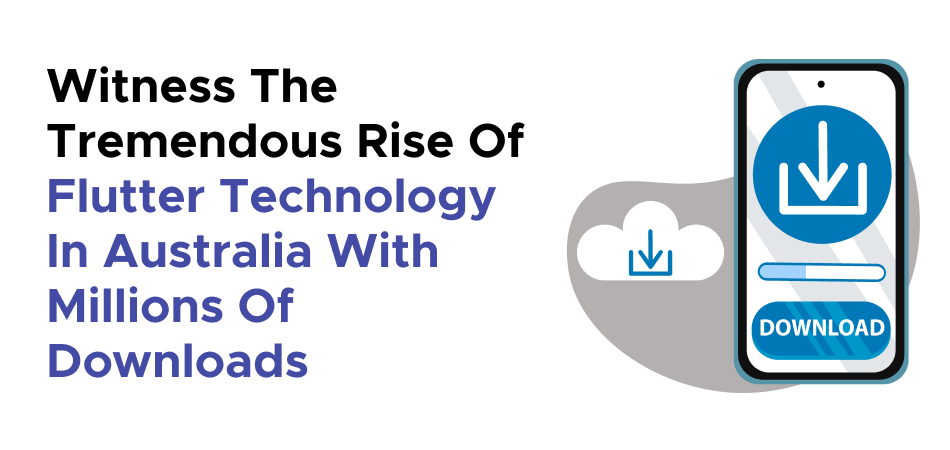
How Much Can You Expect To Spend On Developing A Flutter App?
The cost of developing a Flutter app in Australia depends on the app’s complexity, design, features, and the development team. Thus, on average, a middle-range Flutter application costs AUD 30,000 to $150,000.
If you’re thinking about a straightforward app with nothing like in-app purchases, the price of app design may be between $30,000 and $50,000 for an application. These might comprise core operations, basic design, and little connection to the back end. However, the moment you begin adding functionality—essentially real-time data update, multiple layers of UX/UI, and third-party API extension—it becomes costly progressively.
Mid-tier applications, which may offer extra features and smooth interfaces, cost AUD 50,000 and AUD 100,000. Such applications may require extensive testing, and some may need additional support after release, which is a cost-increasing factor.
Costs can be above AUD 150,000 for complex solutions with many functionalities, complex backend, and scalability for more than 10k daily users. These solutions incorporate more team members, extra time durations, and elaborate quality-measures activities.
That means fees are paid to the app stores for maintaining and updating the apps.
When working with Flutter for the first time, it might be beneficial to find Flutter developers with experience or agencies experienced in the platform. However, as with most things, the final cost of a project can vary; to get a detailed quotation, a detailed project brief must be created to avoid confusion and misunderstandings. It’s cheaper, especially for firms relying on a single solution to effectively target different platforms.
Some Of The Things That Influence The Price Tag Of A Flutter App In Australia-
Creating an app is a vast and tiresome activity that requires thorough strategy and significant loads of money to be available after the application is launched. Such tasks would involve:
- Strategic product marketing.
- Using the same set of users constantly.
- There are constant updates to keep up with technological advancement or competition.
Successful Flutter application development requires carefully selecting good technocrats and experienced designers to execute a project. This is how a flawless product with all your specified requirements will be delivered on time and within budget. The skilled team can work for you, enhance user experience, incorporate innovative features, and help the app remain relevant within a rapidly evolving market. Regular communication and agile methodologies further help streamline the process so that the requirements can change with user feedback or shifts in trends. You build even higher levels of investment in the right resources and experts and define optimal application usage as a competitive tool.
-
App Complexity
The number of features added to the application is also one of the strongest predictors of the price charged for developing a Flutter-based application. The primary and mostly stripped-down app usually costs substantially less than the comprehensive one. For example, a simple weather application could cost between $20,000 and $25,000, while the advanced social media platform may exceed $100,000, including features such as messaging and user profiles with photo uploads.
Besides, one can develop vital times may differ because some simple applications may take a few months. On the same note, long, technologically complicated projects might extend development beyond one year, thus raising the overall expense cost.
Types Of App Complexity
App complexity has three broad tiers: excessive, moderate, and intricate. Many factors are considered in ranking these tiers, including user interface design, the number of features, the number of integration requirements, and the overall functionality of an app. Each of the tiers has a marked difference in the total development cost since more complex applications are resource-intensive, consume time, and require skill in building effectively.
-
Simple App-
Many apps are characterized by basic operations such as user authentication, content viewing, and straightforward interactions. Developing such an app in Australia can cost anything between AUD 10,000 and AUD 50,000, depending on the features to be included, the design, and the development team. Other considerations include the platform type (iOS, Android, or both) and relatively steady and consistent costs for keeping an application operating at its best. Local programmers could be more costly, while outsourcing could be cheaper, though it has some inconveniences.
-
Moderately Complex App-
Not very simple apps may include signing users or combining data and implementing additional individual operations, such as payments, updates, etc. According to the survey done in Australia, it is inexpensive to build this kind of app, which costs about AUD 50000 to AUD 150000.
This means that price factors that come into play include the design complexities, the backend development, and the more significant cross-platform issue. In some changes, experienced developers or agencies add the price but translate it into quality work and help. Maintenance and updates must also be included in the overall costs for the long-term goal to be a reality.
-
Complex App-
We previously built applications with the most straightforward functionalities, such as single sign-on, complex backend interfaces, integrations with other APIs, real-time data processing, and support for multiple users. The cost of developing these apps in Australia might range from $150,000 to $500,000, as well as above and below this, depending on the specific nature and technologies.
Some factors include the uniqueness of the design or the UX/UI design, security needed due to the customer’s regulation needs, or other possible legal issues. A website’s fixing and making should involve a professional developer to ensure the site functions, grows, and remains as intended.
-
App Size-
The size of an app depends on the amount of data and information contained in the app and the number of functional options available. Since it is based on the number of features, larger apps contain more functionalities directly linked to development difficulty and expenses. There is an indication that a complex build of the Flutter app, for instance, will need more resources and, therefore, a higher investment than a simple build. This means that small apps can be made faster and thus require fewer resources, making them more cost-effective and realizable.
-
Screens and Features
A basic template in app development will increase the cost regarding features and screens as they are added. New features entail designs, coding, and testing, and all these come at a price and are charged in the overall budget. More screens lead to more navigation, adding to the development time and costs. Therefore, when hiring an app development company, consideration should be made to the features required to prevent extra costs.
-
Binary Size
Binary size refers to the exact size of an app-compiled file that will be installed on the user’s device. A binary size inherently means a larger file size, which strongly determines the time taken to download the application and the application on the gadgets used by the application users.
This size is, therefore, essential for app developers, as achieving such size can create market competition and help developers capture a larger market share. So, to be more effective and responsive, the Flutter app development firm must consistently work towards reducing binary size while delivering and promising it.
-
Disk and RAM Usage
Disk program is the size of space the app and its data take up, and RAM usage refers to the amount of memory the app takes up when running. As it has been seen, memory management decides the program’s performance, especially when the application has many features. The developers are then left responsible for developing apps for businesses with an experienced app development company to create functional applications that do not waste system resources.
-
Package Size and Lines of Code
Package size is the size of the app file you download from an app store. In parallel, the LOC that must be written for the application will vary greatly, meaning an e-commerce application will require much more LOC than a simple game. While LOC is not a definitive metric, it can be used as a helpful benchmark in gauging complexity. Thanks to the experienced Flutter app development company, the codebase will be clean and efficient in terms of its performance.
-
Features And Functionalities-
Application development costs with the help of Flutter vary in Australia. As previously mentioned, the cost of developing an application depends on its features and functions. Relatively simple applications could cost AUD 20 000 to AUD 50 000; quite sophisticated applications may cost between AUD 50 000 and AUD 150 000 or more. Features like machine learning or artificial intelligence, which might be considered an extra, will cost another AUD 20,000 – AUD 50,000 for the project.
Implementing multiple payment gateways and integrating third-party APIs can also raise the cost of operations by AUD 10,000 to AUD 30,000. Complex, elaborate, and personalized designing for the UI/UX, animations, and, in particular, interactions will bring an additional AUD 10,000 – 40,000 to the overall cost. There is always the temptation to choose a cheap solution regarding these costs. Working with the best Flutter app development company may help tidy up the project expenses.
-
Choosing Technological Platform
Technology selection for application development should consider several factors, including project characteristics, scalability, and costs. The right stack determines development speed, performance, and the future development/maintenance that can be made. Popular stacks include:
-
MERN (MongoDB, Express.js, React, Node.JS):
This stack is great for building MERN applications. Nevertheless, the fee for developing an MERN application ranges from AUD 20000 to AUD 100000, depending on the pp application features used.
-
LAMP (Linux, Apache, MySQL, PHP):
LAMP is cheap and thus best used for simple web applications. The development costs range from AUD 15,000 to AUD 50,000, which makes this product very attractive for start-ups.
-
Flutter/Dart:
This approach is increasingly preferred for building applications with multi-platform availability, with only a single code base for iOS and Android. Depending on the features, an application’s development costs can range between AUD 30,000 and AUD 150,000.
-
Swift/Kotlin:
These languages are used to develop proprietary applications for iOS and Android platforms, and the application’s delivery performances are well-tailored for specific platforms. It also follows that costs will likely fall within the broad AUD 40 000 to AUD 200 000 spectrum because of the application’s complexity and functionality.
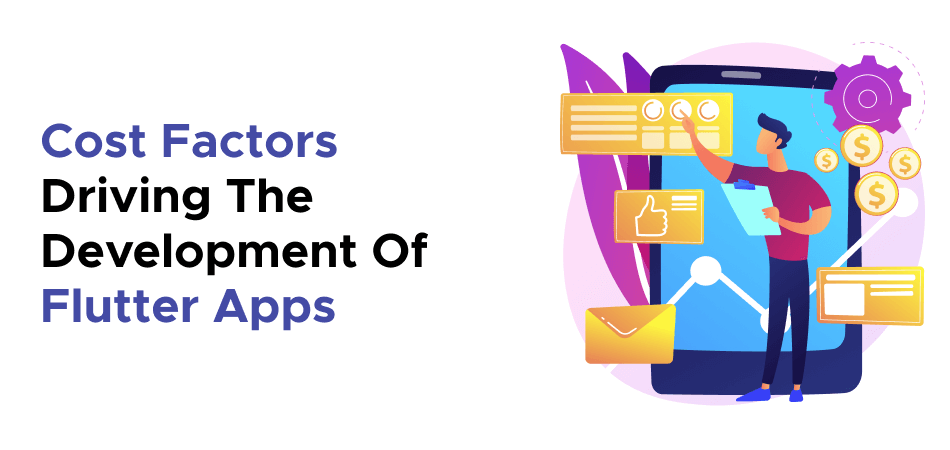
-
Integration With Other Systems
For instance, integrating a Flutter app with other systems increases the development cost in Australia mainly because of the technicality level. For example, the combination of several payment gateways requires considering the characteristic features of each gateway – and this might be highly nontrivial if there are few detailed descriptions of the APIs. This can result in extra hours applied towards development.
This simply adds to the cost of aspects like designing the structure of the SQL or NoSQL database, writing and testing queries, and securing data. However, case-by-case integration of third-party APIs is complicated to implement and requires proper planning to incorporate them properly. It also adds to the escalation of expenses. Altogether, these integration issues can increase development costs and sometimes cost between AUD 15,000 and AUD 50,000, depending on the level of integration and the number of systems on the site.
-
Design Requirements
Design requirements are fundamentally related to designing the aesthetic and experience of an app in terms of its layout and functionality. The choice of platform significantly influences the time required for its development and allocation of resources, which determines the total costs.
Creating the same app for iPhone and Android is more complex and resource-hungry since one must contend with different design guidelines and technical specifications. On the contrary, developing on one platform makes it easier and cheaper. Statistical data from Statista reveal that cross-platform development is the upcoming trend, with 42% of users using Flutter.
The current survey shows that approximately a third of mobile developers prefer cross-platform frameworks while the other half still holds on to the native approach. Additionally, 45 percent of the applications allow compatibility with Android and iOS, 41 percent for Android alone, 11 percent for apply, and 2 percent for other mapping systems. Such statistics indicate a new trajectory in the development of mobile apps towards flexibility and speed.
-
Number of screens and pages
An app’s size directly determines the app’s development time and cost of development. For example, designing an app with only one screen and two buttons will be far cheaper than developing an app with ten screens and one hundred buttons. Whereas primary applications lead to lower development costs, the input of complex functions raises the price significantly. Every screen is quite different and needs a design, interface, and functionality that should be most suitable to create the best user experience.
You should consider partnering with a Flutter app development company since they are often better adapted to handling more extensive and complicated tasks than usual app development companies. The outcome of such expertise implies a faster time in developing and an improved final product.
-
The frame for development
Time is also considered an aspect affecting the overall cost of developing an app via Flutter, and it is in the range of AUD 50 to AUD 200 per hour for a Flutter app. A more extended development period usually leads to additional labour hours and, thus, higher costs. Clients have two primary options for cost control: a time-based cost model, which is pegged on actual hours of work, best for projects with flexible timelines and changing requirements, or a fixed-price contract.
The latter allows for a pre-agreed fee for projects that clearly define the scope of what is to be accomplished, thus providing predictability over budget, and is a favorite among clients who require stability when the project scope is well defined. This helps customers manage their finances well while offering quality development.
-
Development team
An in-house team is always at the core of changing the cost of developing Flutter apps. This would involve maximum control and collaboration, but it comes with a substantial financial cost that can be mainly seen as salaries, benefits, and even running costs for an office. Even keeping the team on board constantly may also mean dealing with multiple projects, which is one considerable complexity that must be addressed.
Although outsourcing companies would cost more for a developed mobile app, an outsourced mobile application development firm is cheaper. Outsourcing teams provide exposure to diverse, experienced developers. This naturally reduces overheads. You have a flexible budget because you pay for hours used, and the scale will depend on what your projects require.
-
User Authentication
User Authentication is a security feature that requires proving user identity before authorizing access to a system. Different implementations of user authentication vary broadly in Australia. The approximate cost of up-front implementation may be around AUD 1000 to AUD 5000 for a username and password system implementation. Once again, depending on the level and number of users to integrate, something as sophisticated as MFA or biometric systems can end up costing as little as AUD 5,000 or exceeding 10,000 or more.
-
App Maintenance
Flutter application development company emerging from an experienced team of developers implies that providing you with our application is only the beginning of the application’s journey. Updates are a usual practice necessary to keep an application relevant and harmonious with users and existing trends. This help is invaluable in keeping an app relevant and frequently used among consumers and other people.
Overall development costs are highly influenced by app maintenance, which entails having a team to work on updates and resolve problems at all times. Ideally, maintenance should be within the range of the first development cost by as much as 20%. For instance, if it costs 100,000 AUD to develop an app, the annual maintenance could be between 15,000 AUD and 20,000 AUD.
Taking care of the products helps users be happy with their chosen products and aids in user retention, which is crucial when competing with rival companies. Continuous support for the app guarantees that Flutter meets the users’ needs and effectively responds to them.
-
Hardware Integration
We comprehend that adding hardware to an app renders more interactivity and challenges the overall operational utility and usability, which is within our superiority as a firm in Flutter app development. Integrating with the physical world can make applications that collect information and perform actions most naturally by connecting your mobile application to sensors, cameras, GPS, or wearables. For instance, you could integrate fitness apps with smartwatches for tracking health metrics, and smart home automation apps manage devices remotely.
Good coding is essential for hardware integration because it ensures compatibility, reliability, and the speed at which information flows between the application and the hardware without any problems or hang-ups.
The cost of hardware-integrated apps will likely vary widely depending on the subsystem. Although Flutter allows hardware integration and has made everything much more accessible, it still offers several coding and testing scenarios to ensure all subsystems, like sensors, are consistent with expectations.
Traditionally, the hardware integration range is between AUD 4,000 and AUD 40,000. This may depend on the particular kind of hardware you will require and your target team’s corresponding level of experience. We shall assist you in creating a genuinely innovative, user-friendly application through proper and robust hardware integration.
1. Integration With IOT
IoT is changing several sectors, which is also felt in app development using Flutter technology. Applications can monitor and control multiple devices without users having to access each one personally; they are smoothly integrated into the existing systems. This greatly influences the user experience and data safety during the application development.
Its flutter capabilities allow data collection and real-time analysis, which businesses can use to make proper decisions and automate processes more effectively. However, IoT solutions require enormous investment, which could range between AUD 45,000 and AUD 75,000.
This investment involves the costs of the devices or computers on which the applications run, continuous expenses related to the software’s maintenance and upgrading, and necessary security measures for protecting business-critical information. By making these investments, companies can increase efficiency and innovation in their operations.
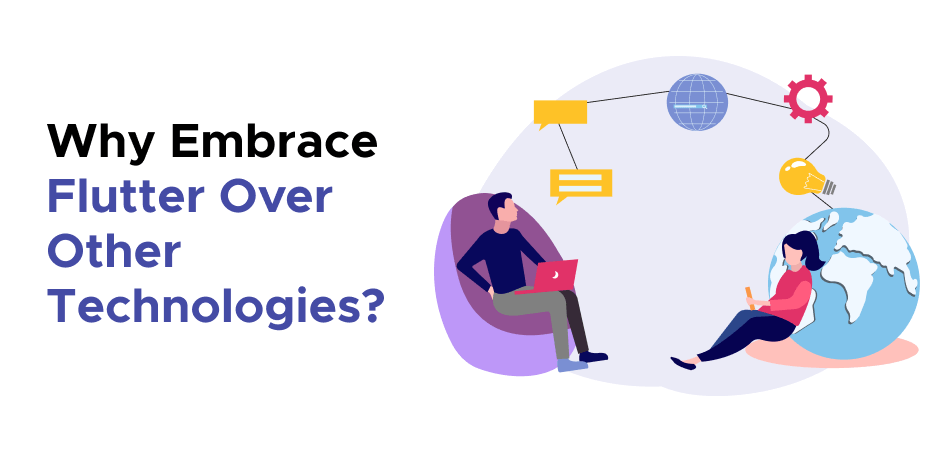
Why Your Business Should Embrace Flutter Technology?
Flutter is an open-source development kit based on diverse, powerful frameworks that create natively compiled mobile and desktop applications from the same codebase. This platform helps developers save time while increasing speed, making the service highly valuable to businesses of any size.
-
Cost Effectiveness and Time-Saving
One of Flutter’s most significant advantages is its cost-effectiveness. Flutter enables the development of iOS and Android apps using the same codebase, drastically reducing time and cost. Therefore, fewer resources will be consumed for maintenance and updates, allowing the company to distribute its budget correctly. Further, Flutter’s Hot Reload facilitates the rapid development cycle so that the developers can see real-time changes and speed up the testing and iteration cycle.
-
Improved Performance
The current app market is mainly characterized by performance since it provides a smooth and responsive experience. Flutter has the highest performance because it is compiled directly to native ARM code, which minimizes performance overhead to an almost negligible level. This means fast startup times and smoother animations for the user, similar to native applications. This, in turn, means improved applications and potentially better business retention rates. Growth in a competitive environment cannot be achieved without that.
-
Beautiful and Highly Customizable UI
The secret to any application’s success is user experience. The Flutter application provides all the pre-designed widgets, which implement a visually appealing yet highly customizable interface. Business houses easily employ their branding elements and brand Flutter’s interface according to the customers’ needs. Developing a solid visual identity promotes brand visibility and engagement, offering user satisfaction.
-
Strong Community Support
As Flutter’s popularity grows, it has a lively and expanding developer and contributor community. This community provides rich resources, tutorials, and plugins that help overcome obstacles and speed up business development processes. Community support enables businesses to stay current with the current trends, best practices, and tools to ensure their applications remain in the market.
-
Future-Proofing Your Business
Investing in Flutter technology is an excellent strategic move toward future-proofing your business. Supporting several platforms, including web and desktop, puts businesses in an ideal position to respond to shifting market demands. Given the pace of change within the digital landscape, there is a need for more versatile and scalable solutions. As Google continues to back the development of Flutter, there is little doubt that this will continue to be a leading technology.
-
Smooth Integration with Existing Tools
Another great advantage of Flutter is its smooth integration with existing toolkits and technologies. Organizations can easily merge the Flutter framework with mainstream development tools, backend services, and third-party APIs, achieving smooth collaboration across multiple teams.
This integration freedom makes businesses’ workflows more productive and helps them use existing technology stacks while innovating with new ones. This means companies can improve their product offerings without changing the whole system, making Flutter an intelligent choice for incremental improvements.
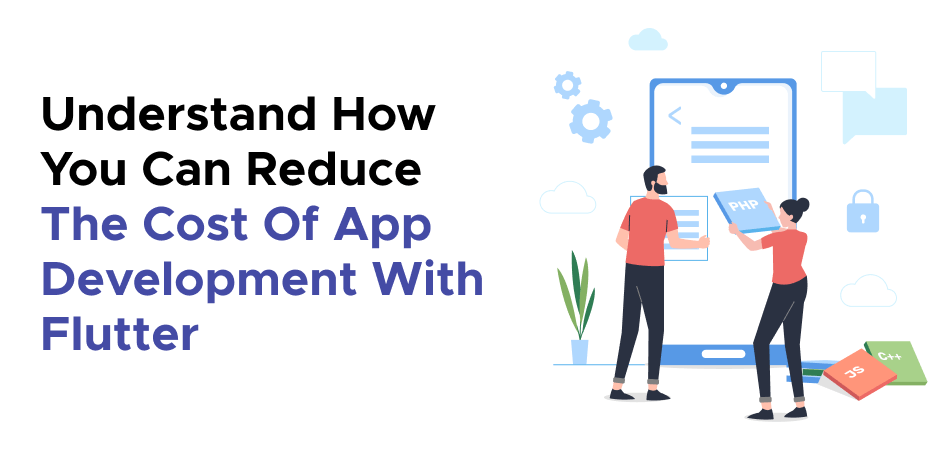
How Does Flutter Help In Reducing Costs?
-
Cross-Platform Development
One of the most important benefits of using this framework is allowing developers to work on both platforms simultaneously. Flutter has excellent benefits: developers can write code for the application on the same base as iOS and Android. This means that companies can cut the costs of application development and management for distinct operating systems. To have a team for each operation, you’d have to spend a lot of money and time, but with the help of app development, companies can reduce the number of teams they need to hire.
-
Faster Development Cycle
Including Flutter’s widget library and hot reload, creating apps is much faster. Any changes can be viewed instantly, making the overall performance efficient and increasing the utility of the developers’ application. This rapid cycle helps the groups see potential problems that cause them to spend considerable time debugging and re-testing. The above realization means that overall development time is cut down, and because this can be accomplished in a shorter time, the costs are reduced.
-
Reduced Testing and Maintenance Costs
Testing becomes much easier by using one codebase for different platforms, which is a feature of Flutter. This approach is preferable to testing two completely different applications since developers can focus on one program version, making both as powerful as the other. This integration approach assists in reducing the levels of required tests and the cost implication for the architectures. Second, it is better to have a single codebase; when several codebases grow and change in the future, one becomes more expensive in the long run.
-
High Performance
In terms of design, the layout is well-proven rationality, enhancing the utilization of available resources within Flutter. The framework used in its execution is the Skia graphics engine, which displays images and scenes and produces animated transitions that are aesthetically appealing and lightweight without demanding a high degree of material loading.
This performance efficiency implies that organizations can run the applications on more devices, including some with reduced capabilities. Thus, companies can reach the end-user base, which remains more extensive than the target population of elite users willing to pay for an optimized infrastructure.
-
Lower Outsourcing Costs
Companies will benefit from outsourcing costs when this application is discussed among all people. A developer will master the subject soon, allowing such companies to tap a considerably larger pool of talent, which could cost much more in an open market. Thus, doing so could be comparatively more straightforward and less costly for business requirements to attain their needs under a controlled budget for app development.
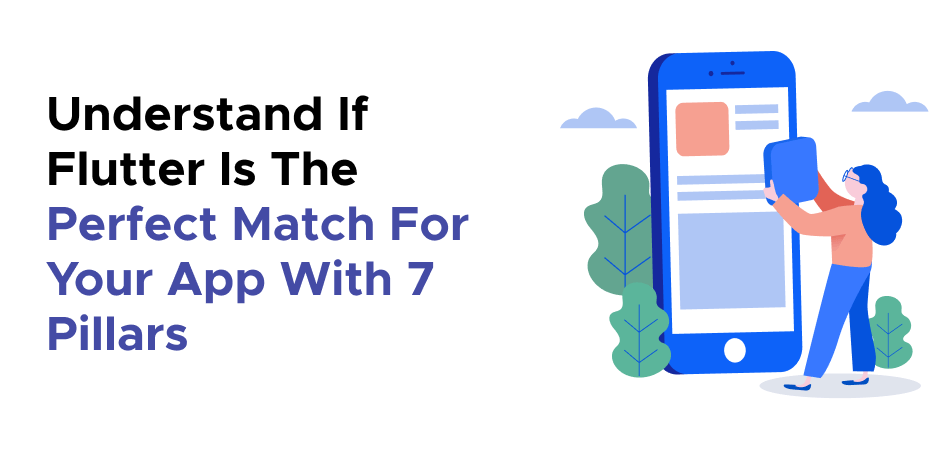
Which Apps Are Best Suited For Flutter Technology?
Cross-platform development is another feature that has set Flutter as a powerful tool in making apps, as it can develop applications for both Android and IOS consumers’ Below are the types of apps that we can highly recommend Flutter for development:
-
E-Commerce Apps
E-commerce projects require an excellent user interface and prompt reaction to consumers’ demands. One of the main benefits of Flutter is the availability of many widgets, which allows for the delivery of good-looking and high-performing e-commerce apps. A reputable Flutter app development company can help organizations offer judicious and seamless purchasing experiences.
-
Social Media Apps
Most popular social media apps rely on dynamic layouts and constant content updates. Hot reload is suitable for applications that require constant updates since it allows them to build faster at Flutter. Therefore, engaging a proficient social media app development company will assist Flutters in creating its unique applications.
-
Financial Apps
Financial applications are most often a relatively closed circle and should be protected against unauthorized access. The architecture of Flutter is robust and ideal for application development to counter security attacks through smooth animations and transitions. Such features can be applied in designing specific and secure apps developed with Flutter, such as banking or investment apps.
-
Educational Apps
As educational applications have shifted to online learning formats, the content must be as entertaining as possible. Because of Flutter’s flexibility, pop-up features such as users and video streaming can be accomplished with Flutter. They are more proactive; thus, if you hire the right application development firm, you will likely get this to help increase the users’ awareness.
Conclusion-
Overall, whether a person is new to the business and venturing into a new market or an existing business owner trying to enhance their business, Flutter application development can make a big difference in boosting the profit of their brand or company. Flutter does this by cutting out many of the unnecessary expense drains. Because of its rapid development cycle, you can release your apps or features much quicker.
Maintenance also becomes easy and manageable through Flutter so that changes can be made quickly and the site can be up and running. The integration function makes it easy to transition from other platforms and improve the existing applications without a hitch.
At 7 Pillars, the best Flutter application development company to create an application you have only dreamt about within the required budget and on time.
Regarding the cost of using the Flutter application, we must calculate the time consumed in developing it and the subsequent maintenance expenses. When working with third-party providers, it is essential to cooperate with experienced workers who know the client’s objectives so that a program that will not satisfy expectations or cost too much money is not created.
When you need an app thought and developed by Flutter, 7 Pillars – an experienced Australian app development company – will meet your requirements. Go ahead— contact us now to embark on your app development process!








